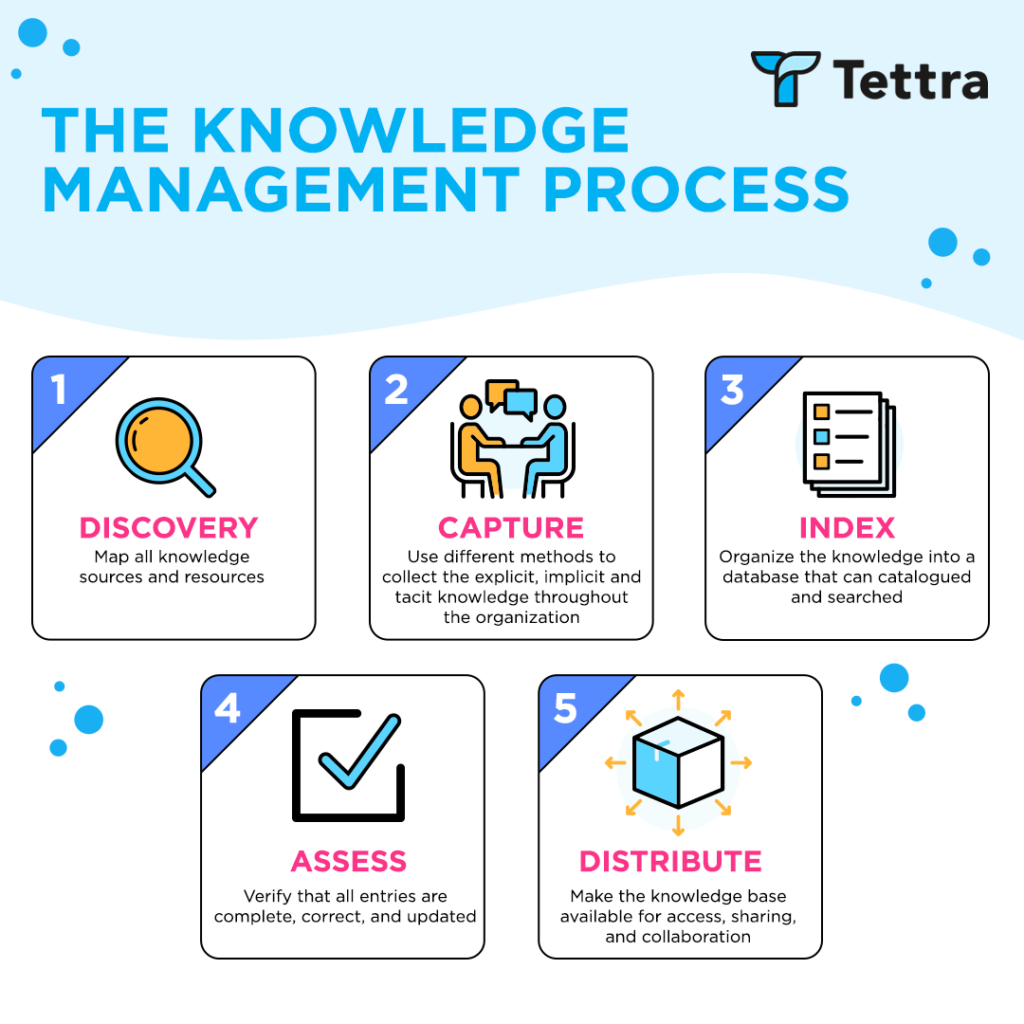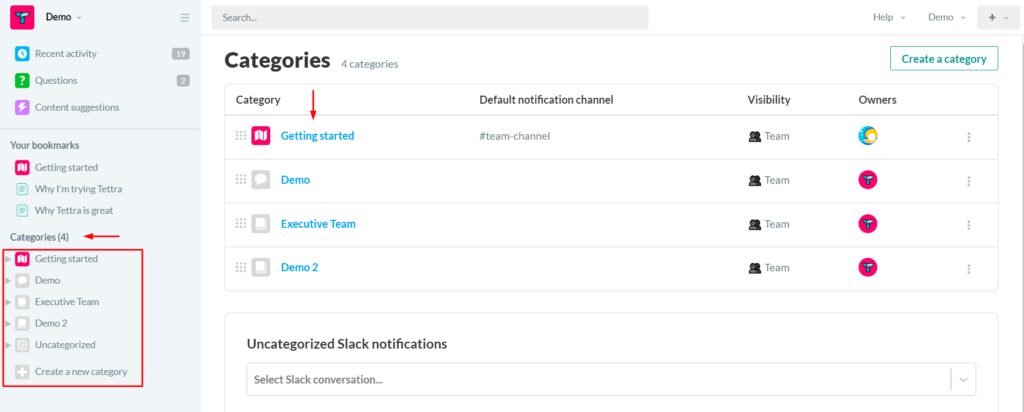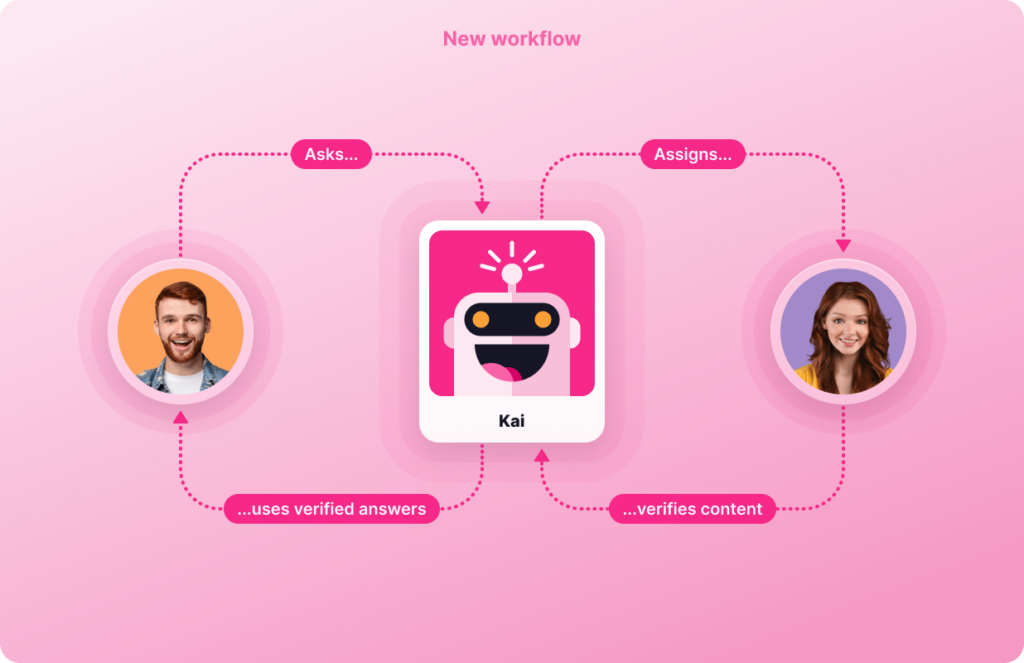Why Do Customer Service & Support Teams Need a Knowledge Base?
Knowledge management refers to the process of capturing, managing, and sharing an organization’s knowledge and information.
Businesses can improve their customer service by providing teams with knowledge management – the information and tools they need– to address complex customer issues and deliver exceptional customer experiences.
To do this, create and maintain an internal knowledge base that customer support teams can access to answer customer questions, troubleshoot issues, and resolve problems.
This knowledge base typically contains information such as company policies, product manuals, troubleshooting guides, and responses to frequently asked questions.
A knowledge base not only improves the speed and accuracy of customer service interactions, but it also helps to establish consistency in the information provided to customers across all touchpoints.
Michael Redbord, the former VP of Service and Support, suggests building out a customer service knowledge base around the 1000 customer mark, or 20-100 employees.
“Around the 1000 customers mark you’ll know the most common issues customers run into. It’s time to dedicate a full-time person to building your knowledge base and providing customer education support,” Redbord said in the Harvard Business Review.

Effective knowledge management can help businesses identify knowledge gaps within their customer service teams and address these gaps through targeted training and development initiatives.
By providing customer support teams with the resources they need to succeed, businesses can improve employee satisfaction and retention while simultaneously delivering exceptional customer experiences.
Using Digital Channels for Customer Service
The proliferation of digital channels has revolutionized the way businesses interact with customers. Digital channels today are far more sophisticated than traditional web-based and mobile platforms. They now extend to voice-activated assistants, chatbots, messaging apps, and social media.
Nowadays, customers are no longer limited to phone or email, but have a multitude of options available for reaching out to customer support teams. Customers expect seamless experiences across all these digital channels, making customer service consistency a crucial differentiator for businesses.
To stay competitive, companies must leverage external knowledge management tools to provide self-service options to customers on these channels.
Doing so ensures that customers can easily access the information they need, regardless of the platform they are using. These tools also equip customer service agents with the same knowledge, ensuring consistency of support across all digital channels.
Chatbots, for example, use natural language processing to provide 24/7 support to customers.
This allows customer service teams to focus on more complex issues while the chatbot handles initial inquiries.
Social media is also a valuable tool for customer support teams, with platforms like Twitter and Facebook offering dedicated support channels.
Types of Knowledge Management for Customer Service Teams
1. Internal Knowledge Base: This type of knowledge management involves building a centralized knowledge base of information that customer service representatives can use to assist customers. It includes information on products, services, policies, and procedures, as well as answers to frequently asked questions (FAQs).
An internal knowledge base can help customer service reps improve their efficiency and accuracy in handling customer queries.
Try Tettra as your internal knowledge base or compare other top options.
2. Community Forums: Community forums are online platforms that allow customers to ask questions, share information and interact with other customers.
A community forum can be a valuable source of knowledge for customer service teams, as they can monitor the platform to identify common customer issues and gather insights on how to address them.
3. Natural Language Processing and AI: Natural Language Processing (NLP) is a type of knowledge management that involves using artificial intelligence (AI) to process, analyze and interpret natural language-based data. Customer service teams can use NLP to analyze customer queries and sentiment, identify knowledge gaps and improve their responses to customer queries.
Many tools like Tettra have AI components to help you surface info quickly.
4. Tacit Knowledge: Tacit knowledge refers to the expertise and skills that customer service representatives acquire through experience and interaction with customers. Customer service teams can use this type of knowledge to improve the quality of their customer support and to develop more effective strategies for addressing customer issues.
You’ll need to do a knowledge gap analysis. This involves identifying areas where customer service reps lack knowledge or experience.
“People are afraid that the skills gap analysis will reveal weaknesses, as opposed to building strengths and fixing weaknesses,” said Anna Langford of Top Ten Consulting to SHRM.
But by identifying knowledge gaps, customer service teams can develop targeted training programs and knowledge sharing initiatives to help their representatives develop the skills and expertise needed to provide better customer support.
Benefits of Knowledge Management for Customer Service
One of the key benefits of knowledge management for customer service is quicker and more accurate resolutions to customer issues.
With access to relevant and up-to-date information using a knowledge management platform like Tettra,, customer service reps can provide timely and satisfactory solutions to customer problems.
This helps to reduce customer churn and increases customer loyalty, as customers are more likely to return to businesses that provide excellent customer service.
Take the example of Geckoboard.
Given Geckoboard’s global reach, the Customer Success team fields questions 24 hours per day. And because Geckoboard is so central to many companies’ ability to function well, these customers expect speedy replies.
They use Tettra to help them find accurate information and respond to customers.
“Having Tettra documentation accessible and up to date is key in reducing resolution times and raising satisfaction,” said Luis Hernandez, VP of Customer Support at Geckoboard.
Knowledge management tools empower employees by giving them what they need to succeed in their roles.
With knowledge articles, product information, and solutions to common customer inquiries, customer service reps can become more confident and efficient in their work.
As a result, this leads to increased employee satisfaction.
Knowledge management also promotes efficient remote work for businesses with virtual or remote customer service teams (like with Geckoboard).
“When you have a remote team, especially with some team members so far away, there are cases where there’s no time in common whatsoever: Hawaii vs London, for example,” Hernandez said.
A knowledge base provides centralized access to information, making it easier for employees to work from anywhere and access the same resources as if they were in the office. This not only saves time and resources but also increases the flexibility of the workforce.
Lastly, knowledge management promotes organizational collaboration by eliminating knowledge gaps and allowing for a seamless exchange of information.
By having all relevant information available in one place, all teams within the organization, including customer service, sales, and marketing, can work together towards the common goal of providing exceptional customer experiences.
Setting Up a Customer Service Knowledge Management System
Setting up a customer service knowledge management system involves establishing a centralized repository of information that can be easily accessed by customer service agents to resolve customer issues efficiently. One of the best tools for creating an internal knowledge base is Tettra.
Tettra is an AI-powered knowledge management software that allows businesses to create, manage, and share knowledge. It provides a collaborative platform for teams to capture their knowledge in one centralized place, making information easily accessible to all members of the team.
How to Create an Internal Knowledge Base in Tettra
1. Set up an account and create a new workspace.

2. Add team members
Once your workspace is created, start adding your team members and assigning roles. Tettra allows teams to have specific roles such as editors, contributors, and readers, ensuring that the right people have access to the right information.
3. Create your knowledge base by adding different categories and sub-categories relevant to your business.
This makes it easier to organize your content and allows team members to quickly find the information they need.

4. Start adding your content to Tettra.
Tettra has several features that allow you to create rich and engaging content. You can add images, videos, and links, and customize the content to make it more visually appealing and comprehensive.

Additionally, the software integrates with popular digital channels such as Slack, Google Drive, and JIRA, making it easy to embed your knowledge base articles into different workflows.
Overall, creating an internal knowledge base with Tettra is a great way to improve your customer service and support teams’ productivity. It enables your team members to access relevant information quickly, resolve customer issues efficiently, and communicate effectively with customers.
Ultimately, creating an internal knowledge base can help your business to increase customer satisfaction and retention while reducing support costs.
What to do next
Whenever you're ready, here's three ways we can help you scale your support org:
- Claim your free Support Manager Handbook. It's a free 30+ page guide filled with strategies, tactics, and best practices for scaling your support org. Download it here.
- Subscribe to our Support Ops newsletter to get the latest updates here.
- Set up Internal Documentation with Tettra to start automatically answering the questions you get in Slack. Here's how.

